The Outdoor Usage of Screens & what to Think of when Installing a Touchscreen Outdoors
On a typical hot summer day, the scorching heat might feel like lava, especially if you try to touch certain surfaces.
That is because, on a summer day, you can witness over 1,000 W/m2 of radiation (watts per square meter). It is not complicated to imagine the condition of your electronic devices that function directly under the sun. Managing the heat and have electronics survive the sun radiation is one of the key issues for outdoor products. Case design and cooling function play a significant role in countering sun radiation and allowing the device to operate seamlessly in various outdoor environments, but more on that later.
Peak sun hours graph
The next issue is the brightness of the sun, giving a standard brightness display little to no visibility. Direct sunlight can reach over 10,000 cd/m2 (candela per square meter) outdoors.
To make displays readable on a sunny day, a brightness level of at least 1,000 cd/m2 is required, and to have a clear image under the direct sunlight you should have around 2,500 cd/m2. To compare this with indoor applications, the brightness required would be around 150 cd/m2, if the light is solely artificial. Optical bonding helps with outdoor visibility, read our other blog for more information on that.
Sun radiation & blackening issue
When non-optimized devices are put straight under the sun, some portion of the screen blackens and can damage the screen. When the temperature does not get too high the blackening normally vanishes once it is cooling down and the display still works. Anyhow, repeated blackening will lead to faster degeneration of the display and will lead to a shorter lifetime of the product.
Blackened display (returns to normal once heat-source is taken away)
Therefore, it is important to pick a display capable of withstanding the sun-radiation just enough to not cause any blackening issues. This is only do-able if the devices design and cooling function can keep the heat within the device at reasonable temperatures, as not to overheat the display and mainboard. Cooling the unit with strong airflow is not that hard, although you need to be careful not to get dust into the display. The real challenge is keeping IP65-devices from overheating as they are sealed off completely, blocking water and dust from getting into the display, but in turn also stopping natural airflow. Therefore, it is so important to design the (semi-)outdoor display units with very careful attention from the start.
In a simulated test, our faytech 43” and 11.6” designed as outdoor devices maintained 1,500 cd/m2 brightness for 240 hours while being exposed to around 1,120 W/m2 without showing any signs of blackening (yes, you read that right).
faytech display showing no signs of blackening while being exposed 1,124 W/m2 of radiation
Casing Requirements for Outdoor Displays
Now that we covered the basic requirements for outdoor displays – brightness & resistance to sun exposure, there are other factors that might affect the ability to place a display in an outdoor environment. The casing and front glass should not only be protected against sun exposure, but also vandalism, water exposure, and deterioration. Additionally, service & installation, connectivity, and environmental design also play an important role when selecting an outdoor display.
Factors to consider when deciding on an outdoor display
With faytech, we have all the above issues in our minds when designing our displays for outdoor or semi-solutions. The first question that will come to our minds is: “how rugged must the design be?”.
Our team of project specialists will make a list and state the basic requirements, this will be followed-upon by the engineers that design the case for this specific usage. Most, if not all solutions have optical bonding. This really allows for greater flexibility when selecting outdoor displays as it improves the picture quality and ruggedness, reduces the reflection, increases the perceived brightness, and also ensures no dust or fog is trapped behind the cover glass.
faytech is here to make things easy for you by personalizing your device according to your own requirements. For example, if you need mics and loudspeakers or interchangeable display kits for a drive-through, we will produce them according to your preferences, while allowing the device to operate in a setting described by you.
During this process, the team will investigate whether the solution should be labeled as full-outdoor or semi-outdoor. But what is the difference between these?
Semi-outdoor Scenarios & Devices
It is impossible to have a non-cooled device under direct sunlight, as the heat would damage the screen and affect the display. The solution for this is to define a semi-outdoor scenario, which is in short:
- Location with no direct sunlight or installation of a sun-shadow on top of the device
- Typical brightness of 1,000 cd/m2, sufficient for readability under bright light
- No need for direct cooling
- Standard design ruggedized and waterproof
faytech’s key technologies for semi-outdoor scenarios include:
- Edge or full-array backlight with 1,000 cd/m2 brightness.
- long-life LEDs with a 100,000+ hour lifetime
- Optical bonding: improved picture quality, stability, brightness, dust resistance, and fog prevention.
Available options at faytech for semi-outdoor devices:
- As an open frame solution for easy integration
- As a free-standing solution
- As a kiosk solution
faytech also provides you with integrated waterproofing and “off the shelves” standard solutions for semi-outdoor environments, available from 7” to 55” (with larger displays available upon request). Whether it is semi-outdoor kiosks, wall mounted displays or integrated solutions, we have got you covered.
Full-outdoor Scenarios & Devices
If you are truly in need of a display standing out in the sun, faytech can customize full-outdoor solutions, which are one step further. These displays require full operation in direct sunlight and always require active cooling and an extremely high brightness screen.
A full-outdoor scenario is as follows:
- The design guarantees no blackening under direct sunlight (sun radiation):
- Commercial standard: 8 hours at 800 W/m2
- Automotive/Military: 240 hours at 1,200 W/m2
- Extra high brightness (minimum of 1,000+ cd/m2, best at least 2,500+ cd/m2)
- Complete waterproof and rugged design
- Active cooling
Full-outdoor device solutions for your business needs
faytech has a project portfolio with plenty of full-outdoor projects, producing devices whose sizes ranged from 7” to 86” in all kinds of locations, with some features adjusted to specific use-cases:
- 4K resolution (3840 x 2160)
- International Standard rating of IP65+ water and dust-proof (Curbs dust, sand, and water from the screen)
- Strong and sturdy
- Vandalism-protected
- Loudspeaker embedded
- 2,500+ cd/m2 for extremely bright and clear screens
- Optically bonded to create no fog, prevent dust, and make your full-outdoor devices waterproof.
faytech’s 55” 4K IP65+ Ruggedized Kiosk Solution
Conclusion
We, at faytech believe in developing and serving digital solutions around the world. With over 20+ years of experience and 1000+ satisfied customers, our products do make an ever-lasting impression on technology. Whether it is in indoor environments, such as hotels, malls, offices, and retail stores. Or in outdoor and semi-outdoor environments, such as factories, transportation signage, wayfinding, and parking lots. With our digital solutions, you can create a completely renewed experience for your customers in any environment!
So, what are you waiting for? Get your project started at faytech now.


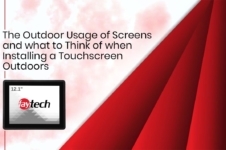
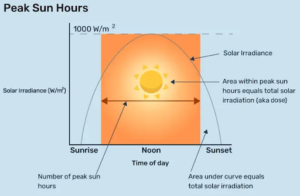
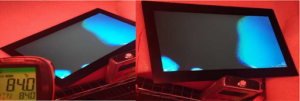

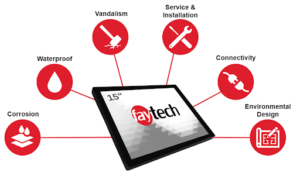
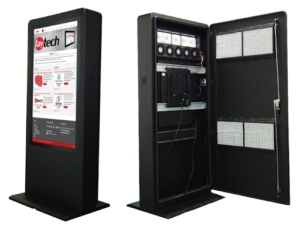
 faytech AG
faytech AG faytech AG
faytech AG



